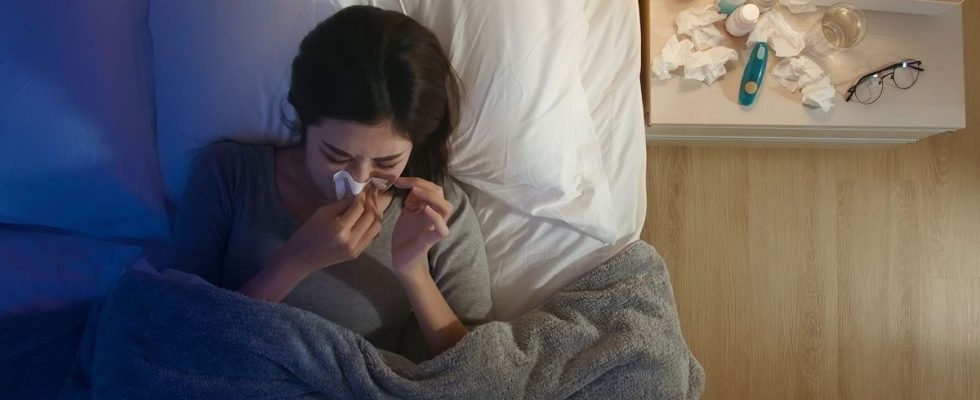Published on
Updated
Reading 1 min.
in collaboration with
Dr Gérald Kierzek (Medical Director of Doctissimo)
You have probably already experienced it when you have a cold: at night, the symptoms become more pronounced and bother you much more. How to explain this phenomenon ? Discover the explanation from Dr Gérald Kierzek, emergency doctor and medical director of Doctissimo.
Stuffy nose, sneezing… you have a cold. If during the day you are more or less able to stay the course, at night the symptoms are amplified. How to explain this phenomenon ? Dr. Gérald Kierzek, emergency physician and medical director of Doctissimo, explains to us.
The lying position explains these symptoms
According to Dr. Gérald Kierzek, this is simply due to the lying down position. Indeed, when we lie down, blood pressure tends to be higher at the head level, which vasodilates the vessels, including those in the nose. “It is this vasodilation which will accentuate the symptoms, including that of a blocked nose” assures the doctor.
In addition to this, at night, secretions are less well evacuated, again due to the lying position. “They will tend to flow into the back of the throat. What will cause irritation, and what will cause more coughing” adds the specialist.
Two tips for getting a better night’s sleep
To get a better night’s sleep, Dr. Gérald Kierzek gives you two tips:
- The first is to take your medication in the evening, preferably. “The medications will work at bedtime, relieving symptoms for at least part of the night.” indicates the doctor;
- The other simple tip is to raise your head with a pillow, which you place under your mattress. “Raising your head allows you to breathe better, evacuate secretions better and therefore sleep with less discomfort.” he concludes.
And to get rid of this rhinitis more quickly, discover our tips for treating yourself without medication.
These recommendations are all the more important as cold medications (vasoconstrictors) are strongly discouraged, as they can increase the risk of heart attack and stroke.

